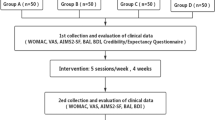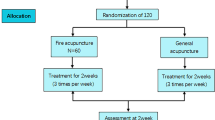Abstract
Conventional Western medicine (CWM) and traditional Chinese medicine (TCM) have different approaches and lead to different practices in experimental design, research methodology, regulation, and standards. TCM emphasizes on the optimal or holistic health. In contrast, CWM is an allopathic medicine primarily based on anatomy, biology, biochemistry, molecular biology and modern technology, and rejects the concept of invisible substances and quantum entanglement. Consequently, CWM emphasizes on abnormal lab tests or obvious diseases. In the early 1970s, TCM and acupuncture quickly emerged as an alternative to CWM as Westerners explored new TCM concepts while questioning the side effects of CWM. Many countries accept traditional acupuncture as a legal alternative medical practice. Some CWM physicians nowadays are more enthusiastic and are receptive to learning and practicing acupuncture. The common goal of CWM and TCM is to enhance human health, but problems arise over differences in approach. As a response to some Western journal papers that failed to validate the real acupuncture effect because of their incorrect methodologies and their ignorance of the holistic acupuncture approaches, the authors hereby present a group of case studies to demonstrate the real and unique effects of genuine acupuncture. The objective was to explore the clinical effects of acupuncture for knee pain. Thirty-six patients with knee pain were divided into five groups based on age. Holistic TCM diagnosis was performed at the beginning of each case and then made a personalized acupuncture treatment prescription according to the root of illness found by the diagnosis. The symptoms and signs were recorded before and after every treatment, and the treatment effects were assessed based upon the self-reported feeling and the observed changes of the patient following the numeric rating scale (NRS). The results were summarized after the completion of the minimal 5 acupuncture treatments or the standard 10 acupuncture treatments. Among the 36 patients who participated in the cases studies, 17 patients reported a complete healing for knee pain (47.2%). About 60 kinds of illness other than knee pain were improved (98.9%) and the complete healing rate was about 44.2%. This leads to the conclusion that TCM acupuncture is remarkably effective in treating knee pain. TCM and CWM share a common goal in promoting the health of human being. The efficacy of TCM acupuncture in treating knee pain shouldn’t be denied or distorted.
摘要
传统中医的起源背景与西方常规医学的发展趋势存在诸多差异。中医强调系统论, 而西医注重还原论。 西医进步缘自解剖、生物、生物化学、分子生物学以及现代技术, 其特点是依赖实验室测试的“非正常”及明显的 病症, 不接受“非可视”物质及量子纠缠概念。自上世纪70年代起在美国等西方国家迅速传播与引用的中医包括针 灸技术, 经过数十年的发展, 仍不能被西方医学界和健康保险机构正确认识或完全接受。鉴于近几年西方个别医 学杂志刊登片面认识中医和盲目否定针灸疗效的文章, 误导读者对传统中医的片面认识或曲解。笔者利用一组临 床病例, 客观分析中医针灸治疗膝痛症的特点与综合效果。该临床针灸研究共包括36个病例, 分成5个年龄组。 每位患者经中医疗法整体诊断后给予个体化针灸治疗方案。每次治疗前后记录症状体征, 采用自我评定及数字分 级评价治疗效果。纳入患者须至少完成5次治疗或全部10次治疗后总结治疗结果。36例患者中, 17例患者(47.2%) 的主诉膝痛症得以根治。在膝痛症患者群中, 原有的其他60多种疾病也意外得到改善(98.9%)或治愈(44.2%)。说明传统中医针灸疗法治疗膝痛症疗效显著。无论传统中医还是西方常规医学, 其共同目的是增进人类健康。中医针 灸的客观疗效不容否认和曲解。
Similar content being viewed by others
References
Eisenberg DM, Davis RB, Ettner SL, Appel S, Wilkey S, Rompay MV, Kessle RC. Trends in alternative medicine use in the United States, 1990-1997: results of a follow-up national survey. J Am Med Assoc, 1998, 280(18): 1569–1575.
Huang Di Nei Jing Su Wen (Yellow Emperor’s Classic of Internal Medicine Essential Questions). Beijing: People’s Medical Publishing House, 1991.
Huang Di Nei Jing Ling Shu (Yellow Emperor’s Classic of Internal Medicine Spiritual Pivot). Beijing: People’s Medical Publishing House, 1995.
Yan X, Shen H, Jiang H, Zhang C, Hu D, Wang J, Wu X. External qi of Yan Xin Qigong differentially regulates the Akt and extracellular signal-regulated kinase pathways and is cytotoxic to cancer cells but not to normal cells. Int J Biochem Cell Biol, 2006, 38(12): 2102–2113.
Cao DY. Return to Chinese Medicine. Beijing: Chinese Medicine Publishing House, 2007.
Huang ZJ, Yao CS. Annotation and Correction of Classical Chinese Medicine Books: Classic of Questions. Beijing: Science and Technologic Literature Publish House, 1999.
Hinman RS, Mc Crory P, Pirotta M, Relf I, Forbes A, Crossley KM, Williamson E, Kyriakides M, Novy K, Metcalf BR, Harris A, Reddy P, Conaghan PG, Bennell KL. Acupuncture for chronic knee pain: a randomized clinical trial. JAMA, 2014, 312(13): 1313–1322.
Wang WQ, Colquhoun D, Novella PS. Acupuncture Is Theatrical Placebo. USA: International Anesthesia Research Society, 2013.
Zhang CZ. The Strategy Research of the Recreation of Traditional Chinese Medicine. National Institute of Information of Science and Technology, 2006.
Zhang NL, Yuan S, Chen T. and Wang Y. Statistical validation of traditional Chinese medicine theories. J Altern Complement Med, 2008, 14(5): 583–587.
Xutian S, Cao D, Wozniak J, Junion J, Boisvert J. Comprehension of the unique characteristics of traditional Chinese medicine. Am J Chin Med, 2012, 40(2): 231–244.
Zhe YF, Zhu ZB. Basic Theory of Traditional Chinese Medicine. Shanghai: Publishing House of Shanghai University of Traditional Chinese Medicine, 2001.
Greenstein G, Zajonc AG. The Quantum Challenge: Modern Research on the Foundations of Quantum Mechanics. Sudbury: Jones and Bartlett Publishers, 2006.
Lu ZY. Scientific Qigong Exploration: The Wonders and Mysteries of Qi. Pennsylvania: Amber Leaf Press, 1997.
Kafatos MC, Nadeau R. The Conscious Universe: Parts and Wholes in Physical Reality. New York: Springer, 2000.
Braden G. The Divine Matrix: Bridging Time, Space, Miracles, and Belief. USA: Hay House, Inc., 2012.
Hurtak JJ. Consciousness, Energy and Future Science. USA: The Academy for Future Sciences, 2004.
Pearsall P. The Heart’s Code-tapping the Wisdom and Power of Our Heart Energy. New York: Random House Inc., 1999.
Xutian S, Zhang J, Louise W. New exploration and understanding of traditional Chinese medicine. Am J Chin Med, 2009, 37(3): 411–426.
Xutian S, Tai S, Yuan CS. Handbook of Traditional Chinese Medicine. Singapore: World Scientific Publishing Company, 2014.
Hamilton DR. It’s the Thought That Counts. USA: Hay House Inc., 2008.
Bao ZY. Abdomen Acupuncture. Beijing: Popular Science Press China, 2006.
Chan Y. The Methodology and Regulation of Chinese Medicine. Beijing: Chinese Ancient Books Publishing House, 1981.
Acknowledgments
This paper has been kindly reviewed by Dr. Frank Wang, Dr. Jiuling Wang, Dr. Page Yu, Dr. Martin Wang, Dr. Johanne Boisvert, Dr. Huijun Zhu, and Mrs. Maureen Schaber.
Author information
Authors and Affiliations
Corresponding author
Rights and permissions
About this article
Cite this article
Xutian, S., Wozniak, J.A., Ling, J. et al. Case studies of Chinese acupuncture’s comprehensive effectiveness on knee pain. J. Acupunct. Tuina. Sci. 15, 270–276 (2017). https://doi.org/10.1007/s11726-017-1012-0
Received:
Accepted:
Published:
Issue Date:
DOI: https://doi.org/10.1007/s11726-017-1012-0
Keywords
- Acupuncture Therapy
- Traditional Chinese Medicine
- Treatment based on Pattern Identification
- Patellofemoral Pain Syndrome
- Knee Pain
- Westernized Needle Stimulate Therapy
- Qi
- Pain Measurement




